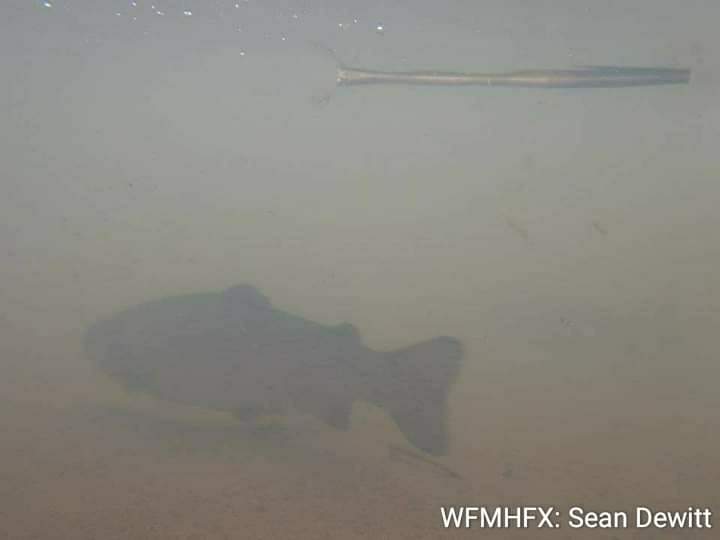**** FISHERIES Media Release
Protect
——————————
The government is taking steps to protect Nova Scotia’s native species of fish, including Atlantic salmon and brook trout.
This weekend, staff from the Department of Fisheries and Aquaculture will use a fish pesticide called rotenone in Dobsons Lake, Guysborough County, to kill invasive smallmouth bass and prevent their spread to other waterways.
“We’ve seen the harm this invasive species has had on native fish communities in hundreds of lakes and waterways throughout Nova Scotia, where once strong populations of brook trout and other fish have been dramatically reduced or entirely eliminated by smallmouth bass,” said Steve Craig, Minister of Fisheries and Aquaculture. “Rotenone is a measure of last resort, but it’s one we know from experience works to protect our native fish species and the ecosystems that support them.”
Local anglers first reported smallmouth bass in Dobsons Lake in the spring of 2020. Efforts to contain and control the population – including temporary barriers, targeted angling, and electrofishing – have been helpful in the short term but are not sustainable or effective long-term solutions.
Rotenone is a biological pesticide derived from plants. It works by preventing the absorption of oxygen in the cells of insects and fish and has been used for hundreds of years to manage invasive fish species. Rotenone-treated water poses no ongoing risk to humans or animals.
Rotenone was successfully used to eradicate smallmouth bass from Piper Lake in Pictou County in October 2020. The lake is now recovering, with frogs and other amphibians already back, along with invertebrates like zooplankton that support the recovery of fish populations. Monitoring has confirmed some local fish species have started to come back, too.
Public access is restricted at Dobsons Lake while Department staff and project team volunteers are onsite. Dobsons Lake will be monitored daily for several weeks after the rotenone treatment and periodically over the next several months. It will remain closed to recreational angling until it can support a sport fishery.
Quotes:
“Invasive fish have a devastating impact on native species. If we do nothing, smallmouth bass will take over Dobsons Lake. They will consume and compete with brook trout and other fish, permanently altering the ecosystem. We have a narrow window of opportunity in which to act to save the Dobsons Lake watershed, and it is now.”
– Deirdre Green, Nova Scotia Program Director, Atlantic Salmon Federation
“On behalf of more than 85 members of the Eastern Guysborough County Dobson Lake/Cooeycoff Volunteer Association, we want to express our full support of this project. The members of this association hail from many communities near this watershed and have worked tirelessly alongside the Department since smallmouth bass were first discovered in Dobsons Lake to prevent their spread and protect the more than 25 lakes, rivers and ponds connected to this pristine waterway. The physical barriers we’ve put up won’t last forever, and although we never want to use rotenone, it is the only way to be sure to protect the native fish, such as brook trout, and keep them thriving in Dobsons and Cooeycoff Lakes and their connecting waterways for our future generations to enjoy. We appreciate the efforts of everyone involved in making this happen.”
– Mike Feltmate, Eastern Guysborough County Dobson Lake/Cooeycoff Volunteer Association
Quick Facts:
— smallmouth bass were brought to Nova Scotia in 1942 and stocked in 10 lakes through the 1960s to support recreational fishing, a common practice in fisheries management at the time
— today, due to ongoing illegal stocking, smallmouth bass have now been confirmed in more than 300 lakes
— trained technicians in personal protective equipment will apply rotenone to the lake as a spray; it begins to work immediately on some fish while on others may take several hours to be effective
— potassium permanganate is used to neutralize the water flowing out of the lake and protect aquatic life in downstream waters




